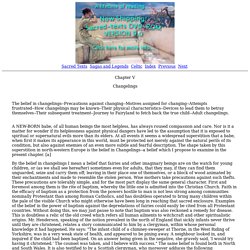

The General Prologue - Translation. A summoner was with us in that place, Who had a fiery-red, cherubic face, For eczema he had; his eyes were narrow As hot he was, and lecherous, as a sparrow; With black and scabby brows and scanty beard; He had a face that little children feared.

There was no mercury, sulphur, or litharge, No borax, ceruse, tartar, could discharge, Nor ointment that could cleanse enough, or bite, To free him of his boils and pimples white, Nor of the bosses resting on his cheeks. Well loved he garlic, onions, aye and leeks, And drinking of strong wine as red as blood. Then would he talk and shout as madman would. And when a deal of wine he'd poured within, Then would. he utter no word save Latin. Some phrases had he learned, say two or three, Which he had garnered out of some decree; No wonder, for he'd heard it all the day; And all you know right well that even a jay Can call out "Wat" as well as can the pope.
The history of bloodletting. With a history spanning at least 3000 years, bloodletting has only recently—in the late 19th century—been discredited as a treatment for most ailments.

The practice of bloodletting began around 3000 years ago with the Egyptians, then continued with the Greeks and Romans, the Arabs and Asians, then spread through Europe during the Middle Ages and the Renaissance. It reached its peak in Europe in the 19th century but subsequently declined and today in Western medicine is used only for a few select conditions. The Complete History & Progression of Bloodletting. Let's say you just can't seem to wake up in the morning and you remain tired throughout the day.

You also experience aching joints and abdominal pain. Naturally, you visit your doctor, expecting to receive the typical lecture about eating right and exercising. Black Cats & Four-Leaf Clovers: The Origins of Old Wives' Tales and ... - Harry Oliver. The Science of Fairy Tales: Chapter V: Changelings. Sacred Texts Sagas and Legends Celtic Index Previous Next Chapter V Changelings The belief in changelings--Precautions against changing--Motives assigned for changing--Attempts frustrated--How changelings may be known--Their physical characteristics--Devices to lead them to betray themselves--Their subsequent treatment--Journey to Fairyland to fetch back the true child--Adult changelings.

A NEW-BORN babe, of all human beings the most helpless, has always roused compassion and care. 10 Completely Uncanny Superstitions From The Middle Ages. Weird Stuff In the pre-scientific Middle Ages, the world was at the same time both fascinating and frightening.

In the absence of proper knowledge, people had no choice but to fall back on their own imaginations to make sense of the myriad natural phenomena around them. The result was a world where everything seemed magical, a place teeming with angels and demons, fairies and goblins, elves, gnomes, and witches. This list takes us inside the medieval mind and the fears and superstitions through which it tried to explain the world.